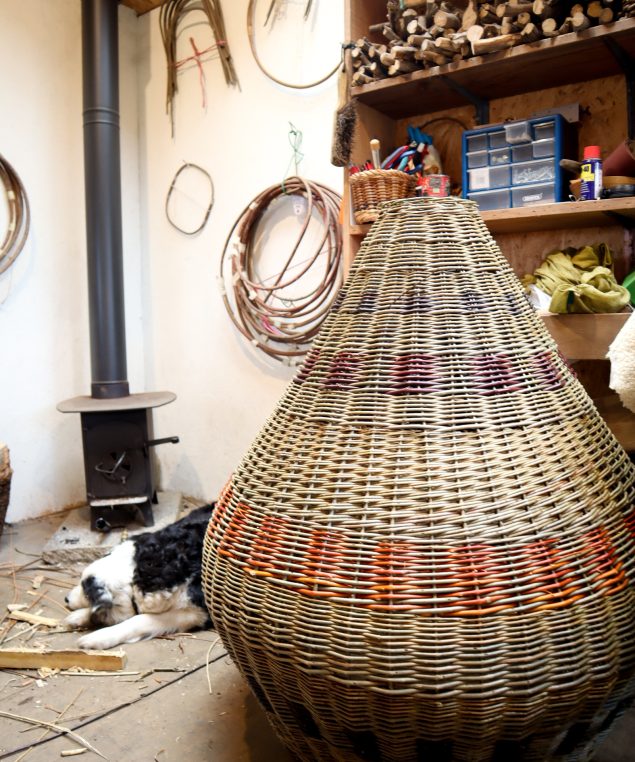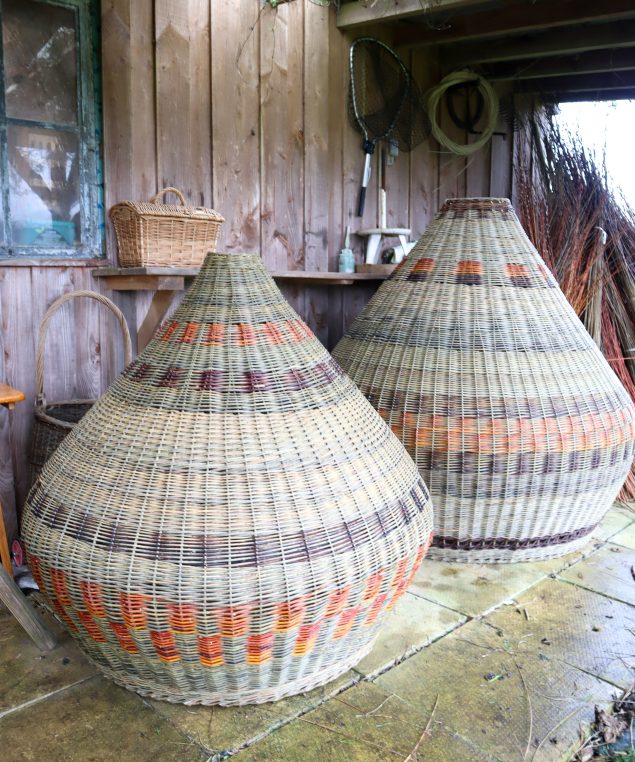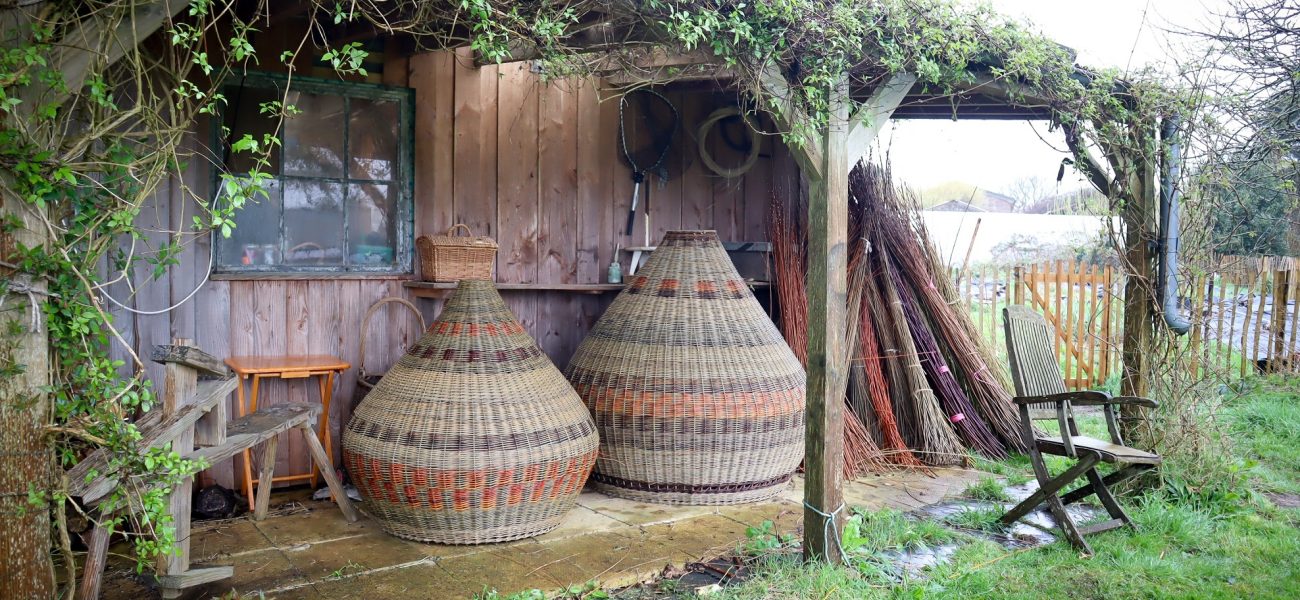
Lin Lovekin
Basket making is an ancient craft. Archaelogy shows civilisations were making baskets long before Moses was placed in a basket on the banks of the Nile two thousand years ago.
The oldest known baskets were found in Fayoum, Egypt and have been carbon dated to between 10,000 and 12,000 years old, predating the earliest forms of pottery. Baskets are the natural heritage of every civilisation, combining art with function. The materials used will depend on what is available locally and include bark, bamboo, grasses, rushes, animal hair, hide, brambles even. Arctic and sub-arctic peoples have used whale baleen, said to resemble a long frayed fingernail.
Here and now, in Cornwall, Lin Lovekin is making baskets her own way. If you look up as you enter the nursery building you will see the huge lampshades she made for us. They are as big as she could make them to get through her workshop doors!
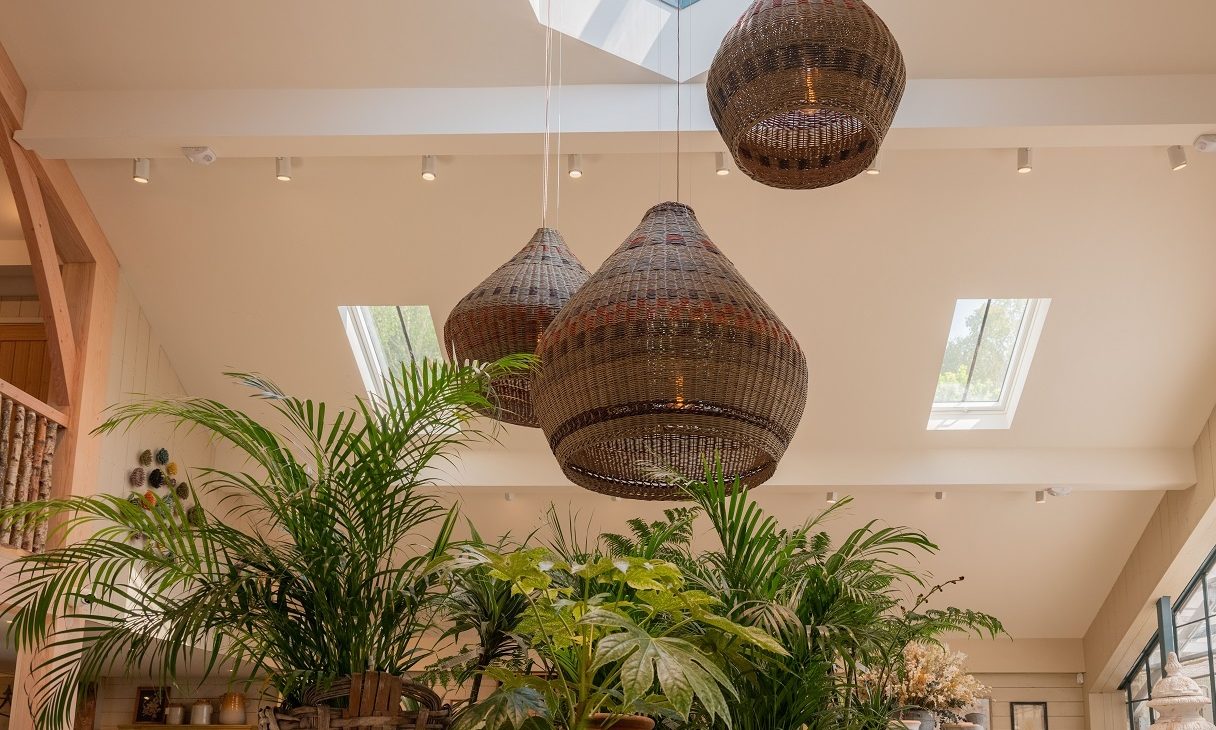
It all started about 25 years ago. After training as a landscape architect, she took a post-graduate diploma, and part of this involved a project making structures out of living willow. This sparked her interest. At that point in her life, it was something she could do without massive investment in machinery, land or workshop premises. To start with she made shopping baskets and log baskets. It was all about speed, and the need to be quick to make a living. Now much of her work comes from commissions, but she would like to take some time to do her own work, and explore new ideas. She particularly likes making the leather-handled handbags, and the baskets with driftwood handles, and says a basketmaker’s style develops with time. Basket making is far from a mindless task, there are endless mini decisions to make as the work progresses. “If you like making, you always want to improve.”
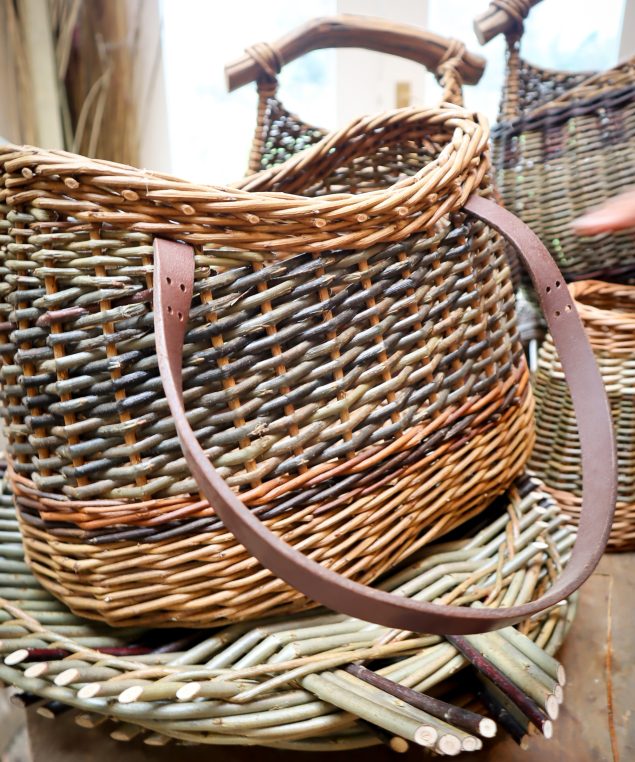
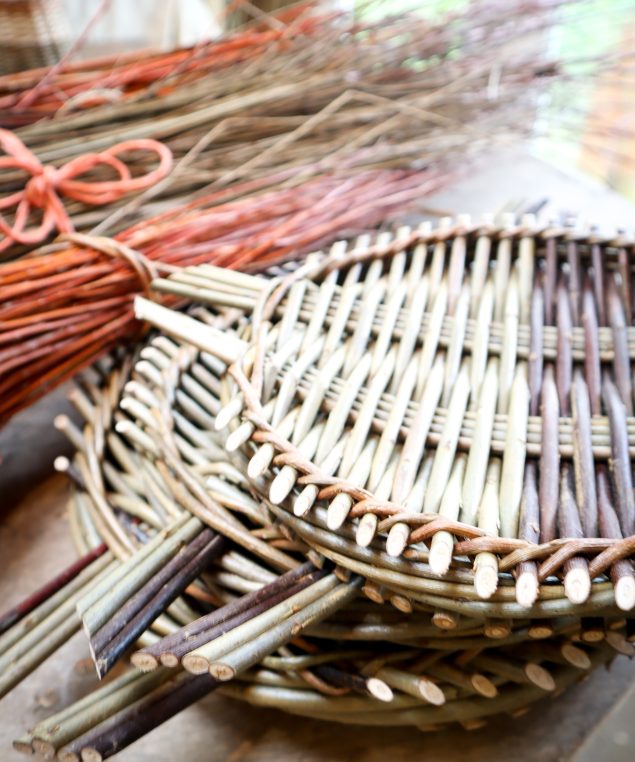
Lin only uses willow for her work. Almost all of it is home grown, but if extra is required it is sourced from Somerset where willow has been grown for centuries because of the perfect wetland conditions. The willow for the Duchy lampshades was all grown in Cornwall. She currently grows upwards of 35 different varieties. The first plantation was planted in 1999. Purchased slips of specific willow varieties (sections of thicker stems about eleven inches long) are simply stuck into the ground and allowed to grow. Willow has a six month growing season, and the whips (new branches growing from the original slip) are harvested annually, including the first year. There is no benefit in leaving them longer because they become thicker and have more side branches which makes them hard to use. Lin now uses a pollarding system, meaning the original plant is allowed to grow a permanent trunk to about hip height before breaking into new growth. This makes harvest easier as there is no bending. Commercially grown willow which is harvested mechanically is cut to ground level each year. The willow is harvested in January or February, depending on weather, but before the willow breaks into leaf which can be as early as the end of January down in west Cornwall. Friends and family help out. Lin describes it as a double harvest because the first job is bramble clearing. Every single whip is cut off using secateurs then the whips are sorted into lengths, tied in bundles, labelled and stored under cover to dry out for several months.
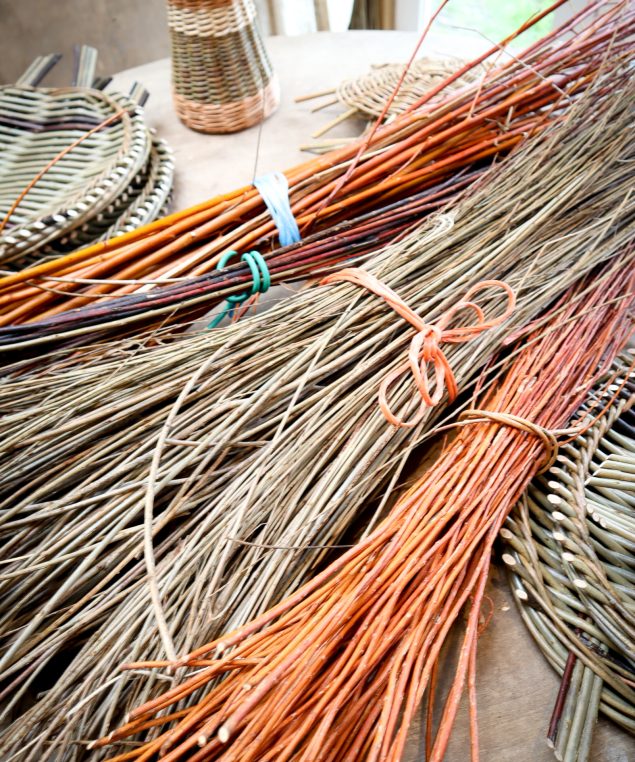

Before it can be used, the willow must be soaked in water for up to three weeks to prevent it shrinking. Once soaked it must be used within several days or it becomes unusable. This means a considerable amount of forward planning is needed for the work schedule. The whips can be steamed instead of soaked to speed the process up, but often colour is lost this way. It can also be stripped of its bark to make white willow, or split lengthways using a cleave. White willow is harvested a little later, as the sap is rising, because this makes it easier to strip off the bark. Each variety has its own characteristics in terms of colour, thickness and pliability, and growth habit. Some branch more than others, some don’t like the wind. Yelverton Orange has a “nightmare habit” but keeps its colour. Dark Dicks, Welsh Dicks and Brittany Blue are all favourites, as is Dicky Meadows. Basketry has its own tools, and language – slip, whip, spoke, weaver and cleave are all common terms.
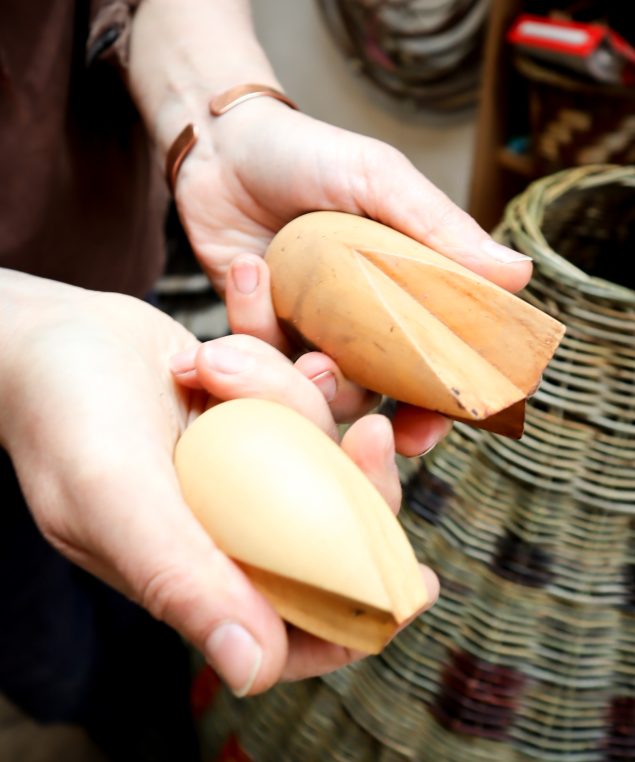
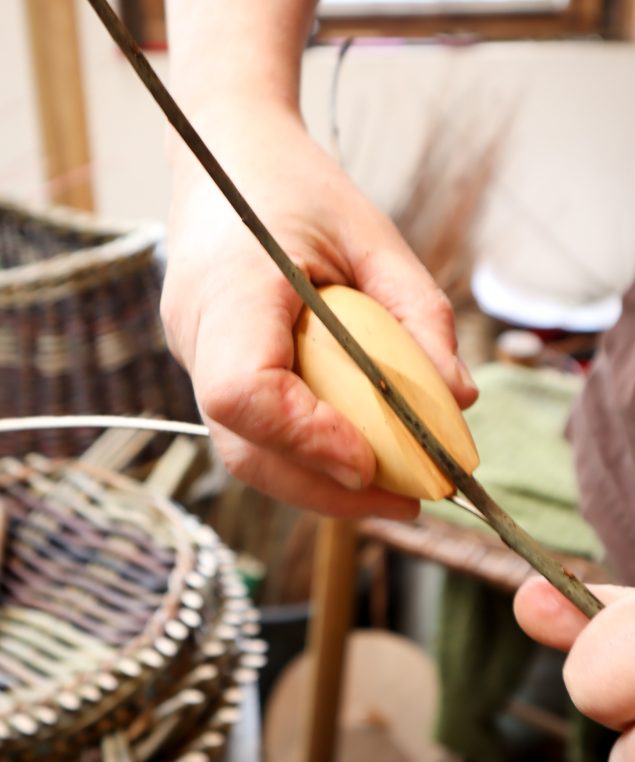
Today Lin has her own workshop, a warm and cosy place close to her house, with a calm atmosphere and a small woodburner. As she works she is kept company by the radio, and her dog Renn who is old and affectionate but completely deaf, “a good workshop dog”. Her work is beautiful, the shapes are pleasing, the colours subtle and the work carefully executed. Apart from a little electricity for lights and the radio, it uses only human energy. It is an entirely benevolent, peaceful, sustainable craft. “It feels like a good thing to be doing. Not creating harm in the world.”
